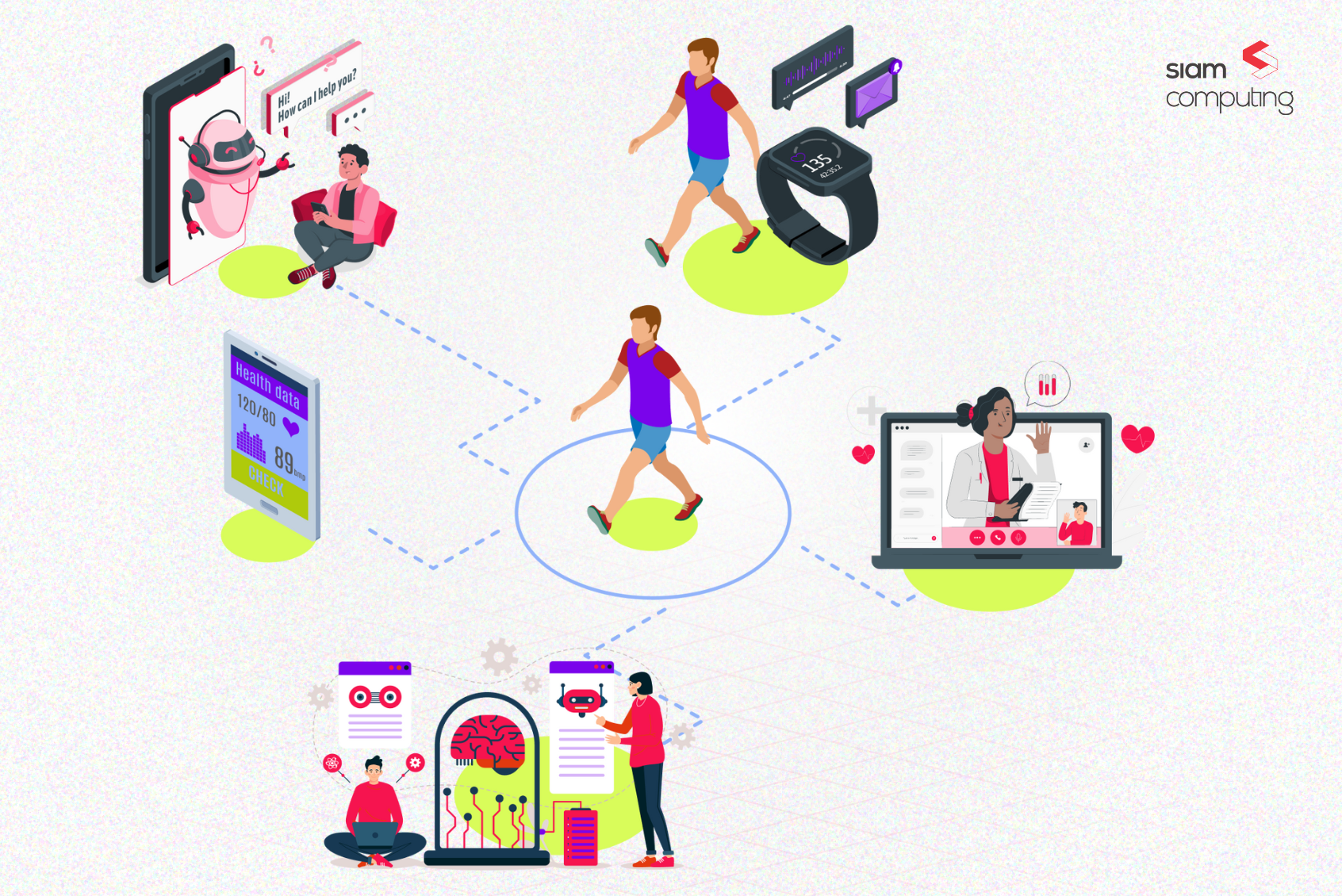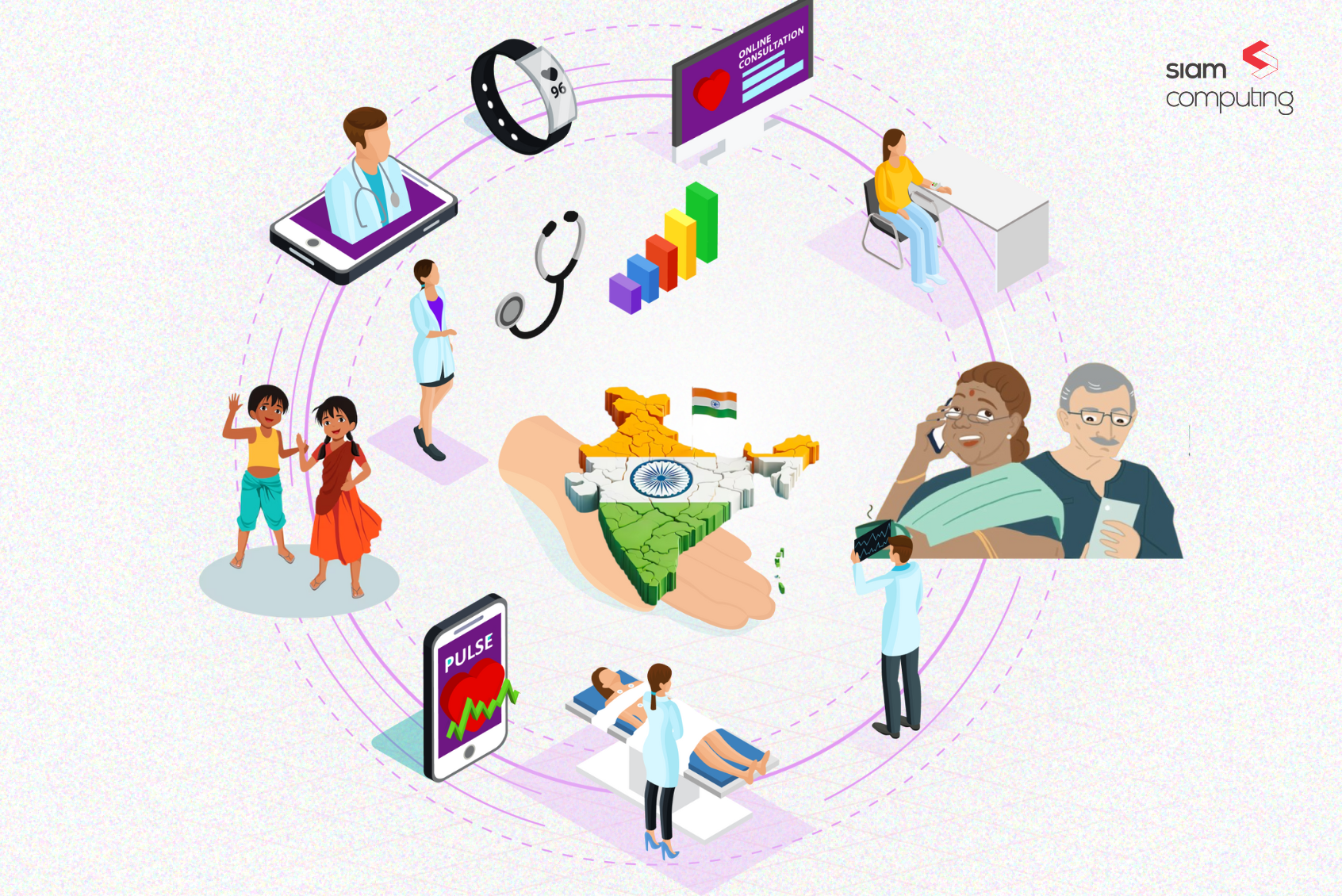India’s healthcare system is on the cusp of a significant transformation with the impending rollout of the National Health Claims Exchange (NHCX). This revolutionary initiative promises to streamline healthcare administration, enhance transparency, and empower patients by establishing a centralized platform for health information exchange.
In this context, payer portals – secure online platforms facilitating communication between healthcare providers (hospitals, pharmacies, etc.), payers (insurance companies), and beneficiaries (patients and caretakers) – emerge as powerful tools to leverage the full potential of the NHCX ecosystem.
Let’s look at the current healthcare landscape in India, how NHCX brings collaboration between healthcare stakeholders, and the role of payer portals in this ecosystem.
Challenges and Opportunities in Indian Healthcare
In a previous blog, we explored the fragmented nature of the American healthcare system. The Indian healthcare system is no different. While there have been significant recent advancements in medical care and a vast network of providers, the country of 1.3 billion people grapples with several challenges.
Fragmented data silos, legacy systems, a lack of interoperability between disparate software solutions, and opaque pricing structures plague the industry. These shortcomings hinder collaboration between stakeholders, create administrative burdens for providers, and lead to a frustrating patient experience.
Here’s a deeper look into some of the key challenges:
- Fragmented Data and Information Silos: Patient medical records are often scattered across various facilities and providers, making it difficult to obtain a holistic view of an individual’s health history. At many places, these records are paper based and sometimes stored in obsolete technology like compact disks. This fragmented data landscape impedes effective care coordination and informed decision-making.
- Lack of Interoperability: The absence of standardized data formats and communication protocols across healthcare IT systems creates interoperability roadblocks. This hinders seamless data exchange between providers, payers, and other healthcare stakeholders.
- Opaque Pricing and Limited Transparency: The current system often lacks transparency in pricing and coverage details, leaving patients confused about out-of-pocket costs and treatment options. This opacity can lead to financial burden and hinder informed decision-making for patients.
- Administrative Burdens: Providers spend a significant amount of time grappling with administrative tasks like claim submissions, prior authorization requests, and denials. This diverts valuable time and resources away from direct patient care.
The NHCX: Ushering in a New Era of Collaboration
When it comes to addressing challenges in the fragmented healthcare landscape, India is taking the right steps. First, the NHA launched the Ayushman Bharat Digital Mission (ABDM) to develop the backbone necessary to support the integrated digital health infrastructure of the country.
Now, as part of the ABDM, India has launched the NHCX. Developed by the National Health Authority (NHA) and backed by the Insurance Regulatory and Development Authority of India (IRDAI), the NHCX is a machine-readable, auditable, and interoperable open-standards-based communication protocol for health data exchange.
Even the United States does not have a nation-wide claims data exchange portal! As a central repository for standardized medical claims data, the NHCX has the potential to:
1. Trigger a shift to value-based care in India (VBC)
The current fee-for-service (FFS) healthcare delivery model in India incentivizes unnecessary procedures as healthcare providers are reimbursed per service rendered. In the West, insurance companies and the government have triggered a shift to VBC models where insurance companies reward hospitals for positive patient outcomes and insurance reimbursement is for quality of care, not just number of procedures.
With access to longitudinal health data from the NHCX, Indian product builders can design solutions that help hospitals and payers track patient progress, manage chronic conditions, and achieve better health outcomes. This shift towards VBC will make healthcare more sustainable and patient-centered.
2. Enhanced interoperability & transparency
The NHCX will mandate the adoption of standardized data formats and protocols, enabling seamless exchange of medical information across all healthcare and insurance players in India. Integration with the NHCX ecosystem ensures a unified view of data for patients, hospitals, and insurers, which hastens claim processing, prior authorization requests, and other administrative tasks, reducing burdens on providers.
The seamless data exchange and interoperability will foster greater transparency in pricing and coverage details. Patients will be able to access clear information about costs, benefits, and out-of-pocket expenses.
3. Frictionless Patient Engagement
The NHCX lays the foundation for seamless patient journeys. Right now patients have to log in to different portals for accessing healthcare, figuring out insurance claims, and diagnostics data. The NHCX paves the way for patient portals integrated with the exchange.
Product builders can leverage the NHCX to design user-friendly interfaces that empower patients. Imagine patients scheduling appointments with hospital partners of the insurance companies, managing claims, and accessing health records – all through a single, secure platform. This convenience fosters trust and patient engagement.
4. Data Security & Privacy
Since NHCX is backed by the government, it adds a layer of trust. The data is not shared with a third party like in other private health exchange networks in the West. This can enable better patient participation in the care journey.
Also, the access to secure patient data via NCHX, empowers product builders to build solutions that comply with regulations like HIPAA (US) and other data privacy laws and regulations.
5. Personalized Healthcare
With secure access to patient data, product builders can create personalized healthcare experiences. In the US, companies like Cleveland Clinic and Mayo Clinic leverage AI to analyze patient data and offer highly personalized care plans.
Similarly, NHCX’s secure data sharing opens doors for Indian product builders to create hyper-personalized healthcare products using AI. Imagine apps that recommend preventive care based on a patient’s medical history, connect them with specialists based on unique needs, or even offer medication reminders.
The Importance of Payer Portals in the NHCX Ecosystem
While the NHCX lays the groundwork for a more connected healthcare ecosystem, payer portals can serve as the connective tissue, bringing stakeholders together on a secure and user-friendly platform.
Value proposition for Providers:
- Reduced Administrative Burden: Payer portals ensure secure and standardized data exchange with the NHCX platform. Providers can automate submission of electronic health records (EHRs), claims, and prior authorization requests through the portal and eliminate the need for manual data entry. This streamlines administrative workflows, freeing up valuable time for providers to focus on patient care.
- Improved Prior Authorization Efficiency: Secure messaging functionalities within the portal can expedite communication with payers regarding prior authorizations. Real-time status updates and streamlined processes can significantly reduce turnaround times.
- Enhanced Care Coordination: Payer portals can provide providers with a holistic view of a patient’s coverage details and treatment history. This facilitates collaboration with other providers involved in a patient’s care journey, leading to more coordinated and effective treatment plans.
- Data-Driven Insights: Payer portals can offer analytics dashboards that provide insights into utilization patterns, treatment costs, and patient demographics. This data can empower providers to make informed decisions about resource allocation, identify areas for cost optimization, and tailor care delivery models.
Value proposition for Payers:
- Reduced Processing Costs: Automation of claim submissions and eligibility verification processes through payer portals can significantly reduce administrative costs for payers.
- Improved Fraud Detection: Real-time access to patient data within the NHCX ecosystem can empower payers with better tools to detect and prevent fraudulent claims.
- Risk Management and Population Health Insights: Payer portals integrated with the NHCX can provide valuable insights into patient demographics, disease prevalence, and healthcare utilization patterns. This data can be leveraged for population health management initiatives, allowing payers to develop targeted preventive care programs and optimize risk management strategies.
- Improved Provider Relationships: Payer portals can foster better communication and collaboration with providers by providing a secure platform for real-time interaction and exchange of information.
- Regulatory Compliance Tools: Payer portals also ensure adherence to evolving regulations with built-in features that support data security and privacy compliance. They can be designed to comply with HIPAA-like regulations in India which are under development.
Value proposition for Patients:
- Enhanced Transparency and Control: Payer portals empower patients with secure access to their medical records, treatment history, discharge summaries, and claims data. This transparency enables them to better understand their coverage details, out-of-pocket costs, and treatment options.
- Improved Communication with Providers: Patients can utilize the portal’s secure messaging features to communicate directly with providers, ask questions, and clarify any concerns regarding their care.
- Appointment Scheduling and Management: Patients can also schedule appointments, manage cancellations, and receive reminders directly through the portal, improving convenience and adherence to treatments.
- Active Participation in Care Journey: Payer portals can equip patients with tools and resources to actively participate in their healthcare journey. Features like medication adherence trackers and personalized wellness recommendations can promote patient engagement and self-care.
Building the Right Payer Portal for the NHCX Era
While the potential benefits of payer portals in the NHCX ecosystem are undeniable, their success hinges on building solutions that cater to the specific needs of the Indian healthcare landscape.
Here are some key considerations for developing effective payer portals in this context:
- Interoperability with NHCX: Seamless integration with the NHCX platform is paramount today. Payer portals should leverage standardized APIs to ensure smooth data exchange with the central repository.
- Data Security and Privacy: Robust security measures are essential to ensure patient data privacy and compliance with HIPAA-like regulations in India. The portal should employ encryption technologies and role-based access controls to safeguard sensitive information.
- Multilingual Support: Catering to the diverse linguistic landscape of India is crucial. The portal should offer user interfaces and support materials in multiple regional languages to ensure accessibility for all stakeholders.
- Mobile-First Design: With the growing smartphone penetration in India, a mobile-friendly design is essential. The portal should be accessible on various devices, allowing for convenient on-the-go access for providers, patients, and payers.
- Focus on User Experience: An intuitive and user-friendly interface is key for driving adoption and engagement. The portal should be easy to navigate for users with varying levels of technical expertise.
The Siam Advantage: Why Choose Us for Your NHCX Payer Portal Needs
At Siam Computing, we understand that a one-size-fits-all approach doesn’t work in the complex world of healthcare. Unlike plugin SaaS solutions, we will design your payer portals to be modular and customizable, allowing us to tailor functionalities to the specific requirements of each stakeholder group.
Beyond the feature-rich functionalities, we offer several distinct advantages that make us the ideal partner for developing your NHCX-compliant payer portal:
- Deep Understanding of the Indian Healthcare Landscape: We possess a comprehensive understanding of the intricacies of the Indian healthcare system and the challenges faced by providers, payers, and patients. This allows us to tailor our solutions to address the specific needs of the Indian market.
- Proven Expertise in Patient Experience Platform Development: We have a proven track record of developing secure, interoperable, and user-friendly patient experience platforms for leading healthcare organizations in India.
- 150+ Organizations Have trusted us to Simplify their Product Journey: With 12+ in the industry we have developed products that meet user needs for 150+ startups and established businesses. Our expertise lies in simplifying the problem to product journey of founders.
Connect with our product experts today to understand how we can help build a payer portal for your organization that enhances the user experience of all your healthcare stakeholders.








